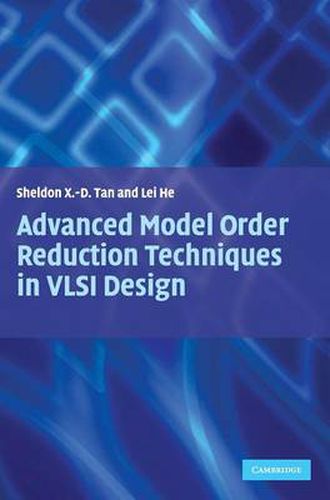Readings Newsletter
Become a Readings Member to make your shopping experience even easier.
Sign in or sign up for free!
You’re not far away from qualifying for FREE standard shipping within Australia
You’ve qualified for FREE standard shipping within Australia
The cart is loading…






Model order reduction (MOR) techniques reduce the complexity of VLSI designs, paving the way to higher operating speeds and smaller feature sizes. This book presents a systematic introduction to, and treatment of, the key MOR methods employed in general linear circuits, using real-world examples to illustrate the advantages and disadvantages of each algorithm. Following a review of traditional projection-based techniques, coverage progresses to more advanced MOR methods for VLSI design, including HMOR, passive truncated balanced realization (TBR) methods, efficient inductance modeling via the VPEC model, and structure-preserving MOR techniques. Where possible, numerical methods are approached from the CAD engineer’s perspective, avoiding complex mathematics and allowing the reader to take on real design problems and develop more effective tools. With practical examples and over 100 illustrations, this book is suitable for researchers and graduate students of electrical and computer engineering, as well as practitioners working in the VLSI design industry.
$9.00 standard shipping within Australia
FREE standard shipping within Australia for orders over $100.00
Express & International shipping calculated at checkout
Model order reduction (MOR) techniques reduce the complexity of VLSI designs, paving the way to higher operating speeds and smaller feature sizes. This book presents a systematic introduction to, and treatment of, the key MOR methods employed in general linear circuits, using real-world examples to illustrate the advantages and disadvantages of each algorithm. Following a review of traditional projection-based techniques, coverage progresses to more advanced MOR methods for VLSI design, including HMOR, passive truncated balanced realization (TBR) methods, efficient inductance modeling via the VPEC model, and structure-preserving MOR techniques. Where possible, numerical methods are approached from the CAD engineer’s perspective, avoiding complex mathematics and allowing the reader to take on real design problems and develop more effective tools. With practical examples and over 100 illustrations, this book is suitable for researchers and graduate students of electrical and computer engineering, as well as practitioners working in the VLSI design industry.